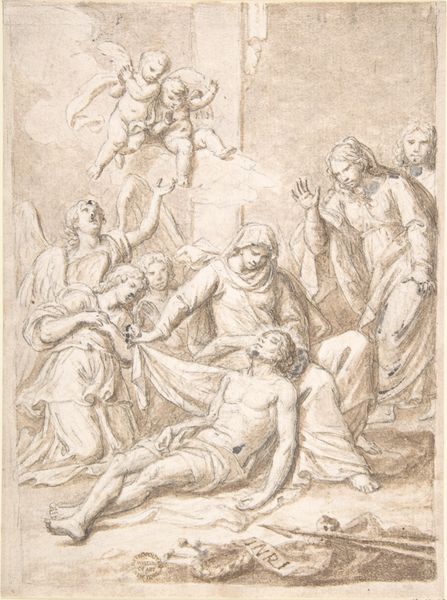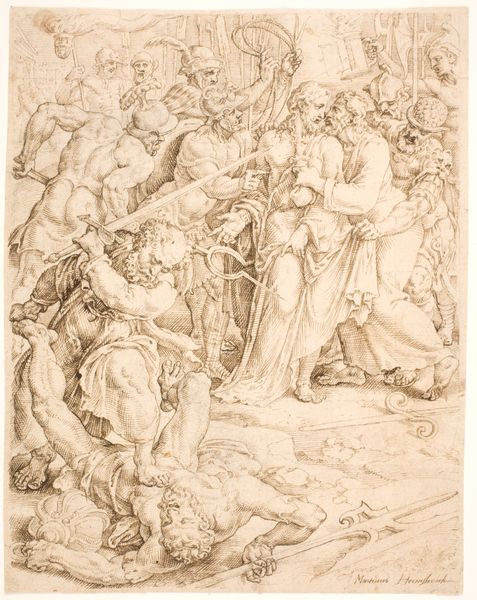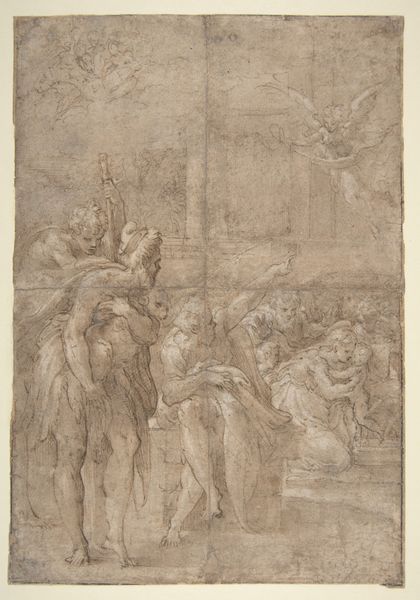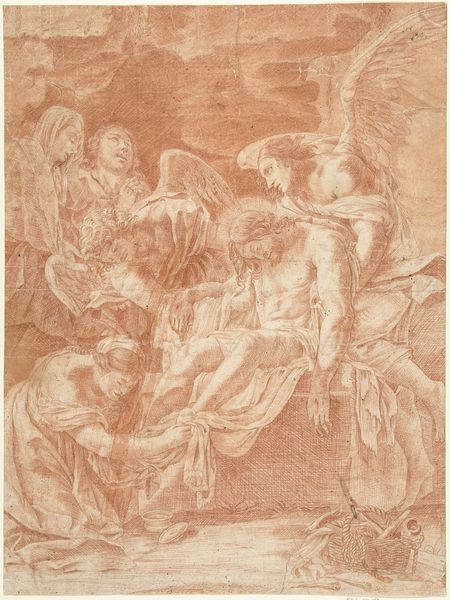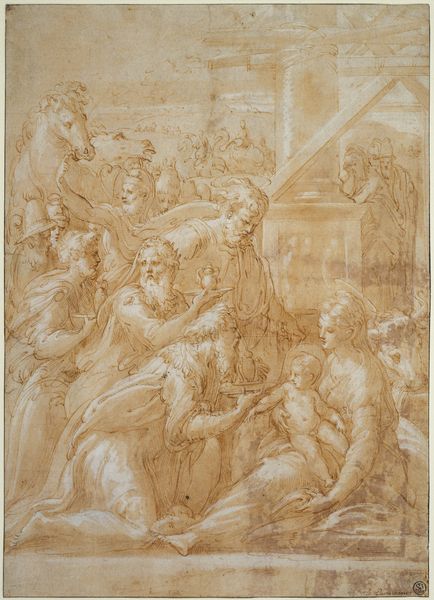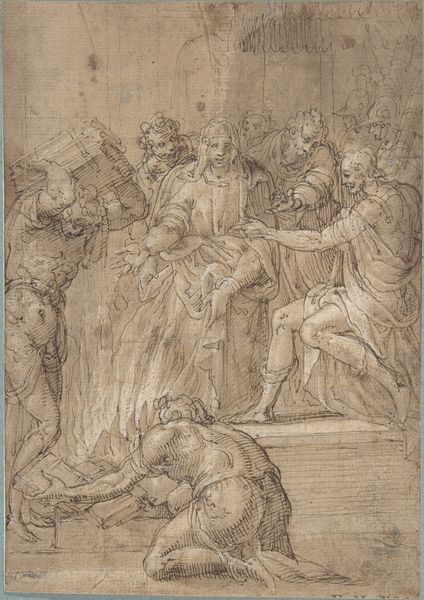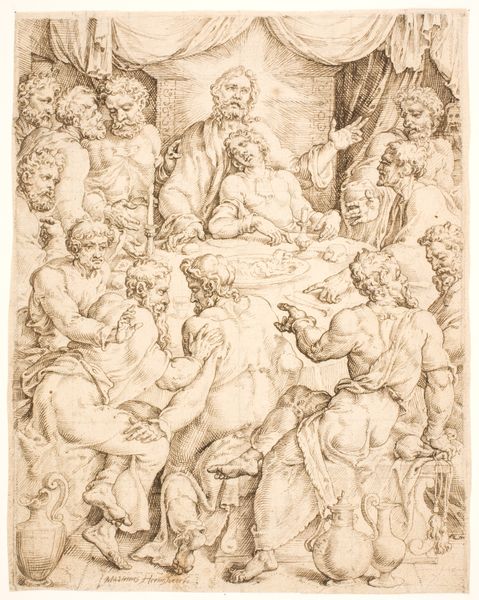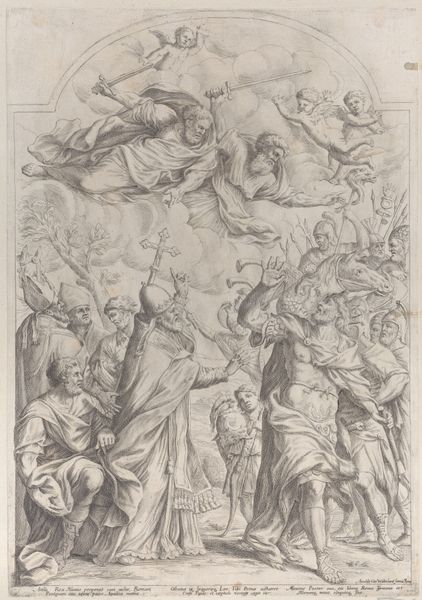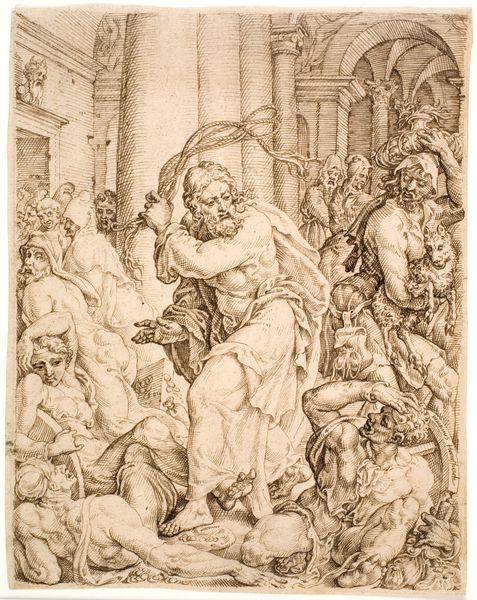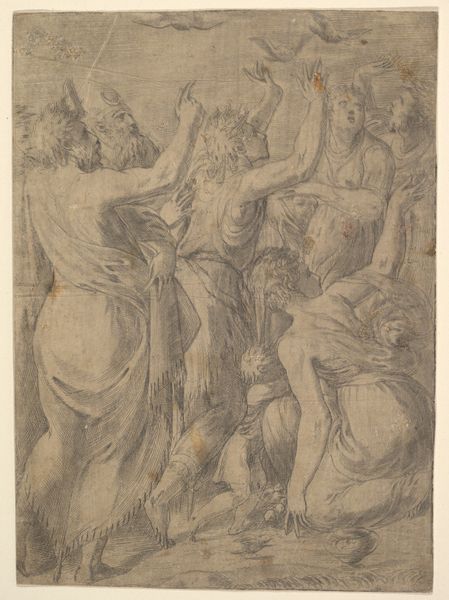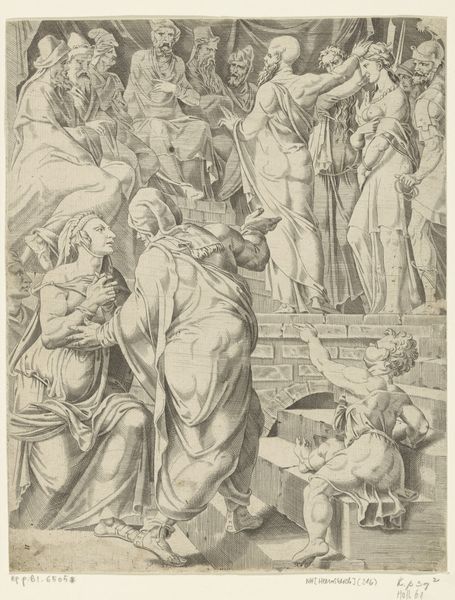
drawing, oil-paint, ink, pen
#
portrait
#
drawing
#
baroque
#
oil-paint
#
landscape
#
charcoal drawing
#
figuration
#
ink
#
cross
#
pen
#
history-painting
#
italian-renaissance
#
christ
Dimensions: 12 1/2 x 9 1/4in. (31.8 x 23.5cm)
Copyright: Public Domain
Curator: The somber stillness here is overwhelming. There's almost a silence emanating from the sepia tones. Editor: You’re responding, I think, to Pasquale Ottino’s "Descent from the Cross," created between 1615 and 1616. It's a pen and ink drawing at The Metropolitan Museum of Art. Curator: Pen and ink? Remarkable. Given the historical and religious context of this imagery—Christ taken down, mourned over—I feel immediately the immense loss, particularly reflecting on whose lives are systemically devalued even today. Editor: Focusing on the materiality of that era, Ottino and his workshop had to source specific types of paper, prepare their inks meticulously to achieve these varying sepia tones and ensure its archival stability… This suggests that its production was highly valued within a late Italian Renaissance context, especially considering the sheer skill to pull this together with just ink. Curator: Right, it’s in these textures that emotion seems amplified. Note the women's faces – so drawn and anguished, so completely overtaken by grief and that collective experience that mirrors many women across cultures grieving collective and systemic traumas even now. Is there an intentional choice here to elevate these women by visually prioritizing their reaction and grief? Editor: Consider the means to create that very reaction you're referencing. The specific quills he would use, the weight applied. The whole workshop ecosystem was dedicated to achieving precise expressive effects with affordable raw materials and intensive training. The Baroque artists who trained inside Ottino’s bottega are still recognized now for using that production capacity. Curator: That makes me question how those specific artisanal production structures perpetuated, intentionally or otherwise, societal structures as a whole: the artist as the owner of that process. What kinds of ethical questions would someone like Pasquale Ottino grapple with today? How has the art world dealt with its own "Descent" narratives by attempting to lift previously unheard voices through art? Editor: Interesting question that Ottino would respond to now. Focusing solely on the artist at this moment risks losing an understanding on collaborative economies within and beyond these shops, but even further that an understanding is based solely on surviving accounts. Ultimately, Ottino was deeply ingrained with available cultural labor and cultural materials of that time. Curator: Point well taken, and with this material base laid out, it's perhaps easier to deconstruct any imposed "genius" notions onto his labor to expose the collective cultural forces which in the end created a long impact from then until today. Editor: Precisely, by seeing art as fundamentally material, we move away from this sole fixation to acknowledge that there are social conditions and means of production always happening.
Comments
No comments
Be the first to comment and join the conversation on the ultimate creative platform.
